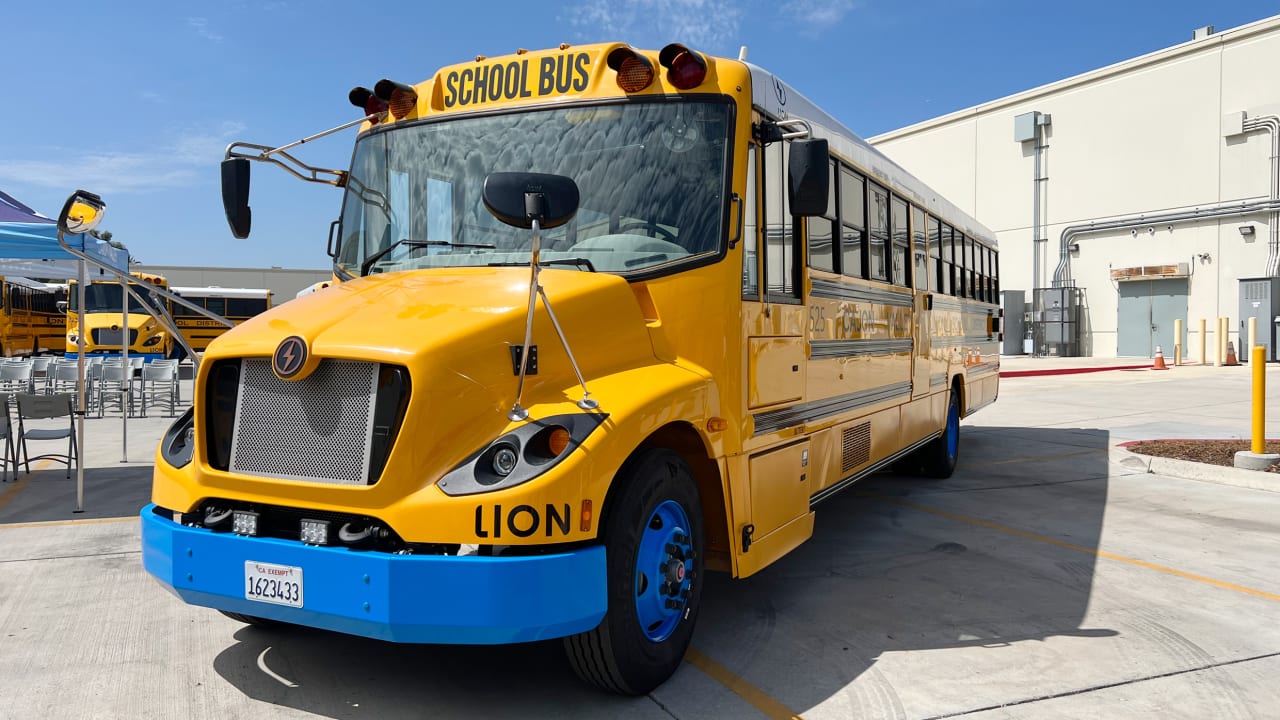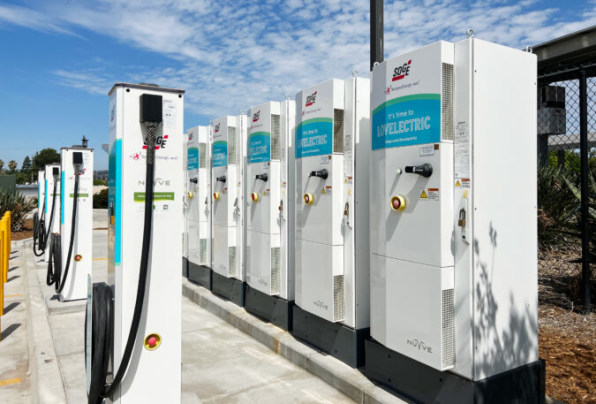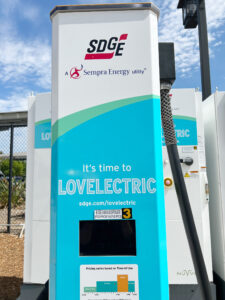These electric school buses can help power the grid
When the electric school buses in a small fleet in El Cajon, California, aren’t taking children to school, they serve another purpose: They can send extra power back to the grid. San Diego Gas & Electric (SDG&E), the local utility, recently installed six bidirectional chargers in the school district’s bus yard. In a new pilot, the utility is testing how its eight buses can help when the grid is under stress—for example, in a heat wave, when power use surges as thousands of people turn on air conditioners. In the middle of the day, when the buses aren’t in use, they can help store the state’s extra solar power. (Right now, California often produces so much extra solar power that grid operators have to curtail production.) Then, if more power is needed later in the day, the school district can voluntarily send some power back and get paid for the service. [Photo: courtesy San Diego Gas & Electric]“As the electric grid moves into being supplied more by renewables . . . we know we’re going to need multiple solutions to maintain reliability and resiliency,” says Miguel Romero, vice president of energy innovation at the utility. As more electric vehicles hit roads, they’re increasing demand on the grid. But they can also start to act like mini power plants, Romero says, especially when EVs have large batteries. [Photo: courtesy San Diego Gas & Electric]School buses are especially well suited for this purpose. They have large batteries. They also run on a predictable schedule and sit unused for hours each day. In the summer, when electricity demand is most likely to surge, school buses often aren’t used at all. In Virginia, Dominion Energy has been helping local schools acquire electric buses, covering part of the cost and managing charging equipment in exchange for the ability to use the buses to help the grid in the summertime. In Massachusetts, a startup called Highland Electric Transportation plans to help school districts make an affordable switch to electric buses—with a model that charges by the mile, rather than a huge up-front cost, and then profits by selling electricity back to the grid. The company piloted the model in 2021. In California, SDG&E partnered with Nuvve, a software company that’s helping manage how the system works. For example, if a bus is going back on the road and doesn’t have enough time to recharge, it might refuse a request to share power. A new program at the utility will pay business customers like the school district $2 per kilowatt-hour if they can export energy to the grid during emergencies when demand has surged. The pilot will help the utility learn how the same system could potentially be used with other fleets of electric vehicles, like delivery trucks. “We want to build this to scale,” Romero says. “We know how much electrification is happening in the transportation sector, especially when it comes to large fleets. We know that the batteries in these fleets are significantly larger than those in light-duty vehicles. . . . Clearly, there’s going to be a significant number of that type of distributed energy resource—large fleets roaming around—that we would want to tap into in the future.”

When the electric school buses in a small fleet in El Cajon, California, aren’t taking children to school, they serve another purpose: They can send extra power back to the grid.
San Diego Gas & Electric (SDG&E), the local utility, recently installed six bidirectional chargers in the school district’s bus yard. In a new pilot, the utility is testing how its eight buses can help when the grid is under stress—for example, in a heat wave, when power use surges as thousands of people turn on air conditioners.
In the middle of the day, when the buses aren’t in use, they can help store the state’s extra solar power. (Right now, California often produces so much extra solar power that grid operators have to curtail production.)
Then, if more power is needed later in the day, the school district can voluntarily send some power back and get paid for the service.

As more electric vehicles hit roads, they’re increasing demand on the grid. But they can also start to act like mini power plants, Romero says, especially when EVs have large batteries.

In Virginia, Dominion Energy has been helping local schools acquire electric buses, covering part of the cost and managing charging equipment in exchange for the ability to use the buses to help the grid in the summertime.
In Massachusetts, a startup called Highland Electric Transportation plans to help school districts make an affordable switch to electric buses—with a model that charges by the mile, rather than a huge up-front cost, and then profits by selling electricity back to the grid. The company piloted the model in 2021.
In California, SDG&E partnered with Nuvve, a software company that’s helping manage how the system works. For example, if a bus is going back on the road and doesn’t have enough time to recharge, it might refuse a request to share power.
A new program at the utility will pay business customers like the school district $2 per kilowatt-hour if they can export energy to the grid during emergencies when demand has surged.
The pilot will help the utility learn how the same system could potentially be used with other fleets of electric vehicles, like delivery trucks.
“We want to build this to scale,” Romero says. “We know how much electrification is happening in the transportation sector, especially when it comes to large fleets. We know that the batteries in these fleets are significantly larger than those in light-duty vehicles. . . . Clearly, there’s going to be a significant number of that type of distributed energy resource—large fleets roaming around—that we would want to tap into in the future.”






















